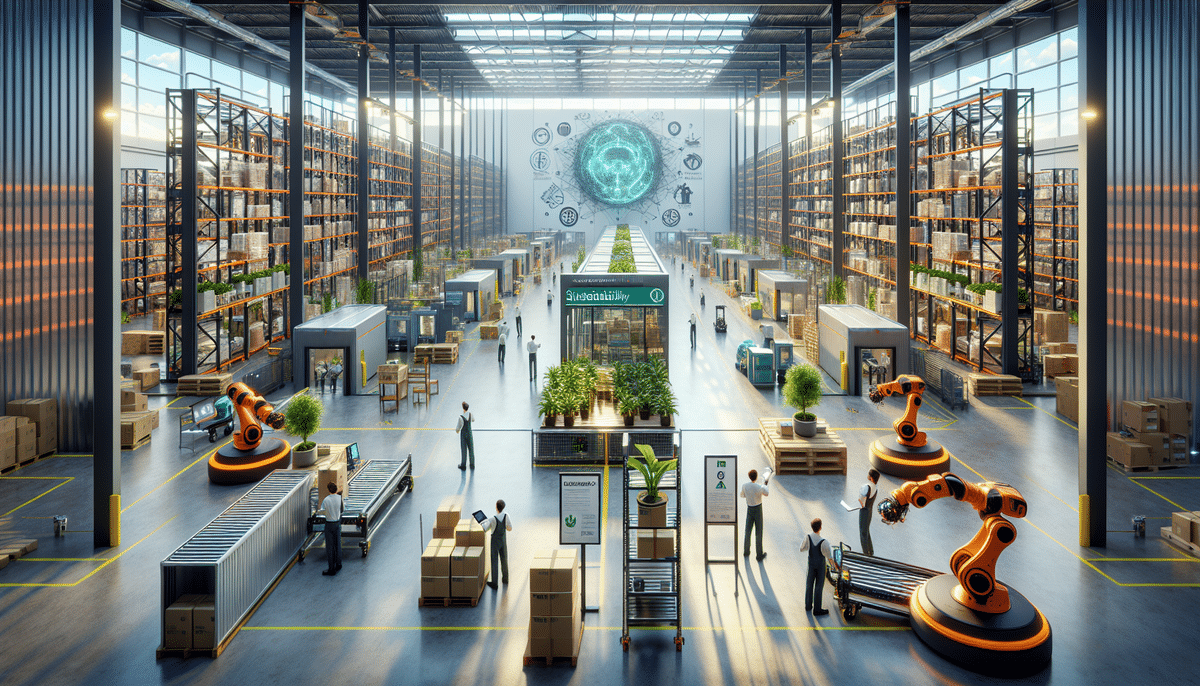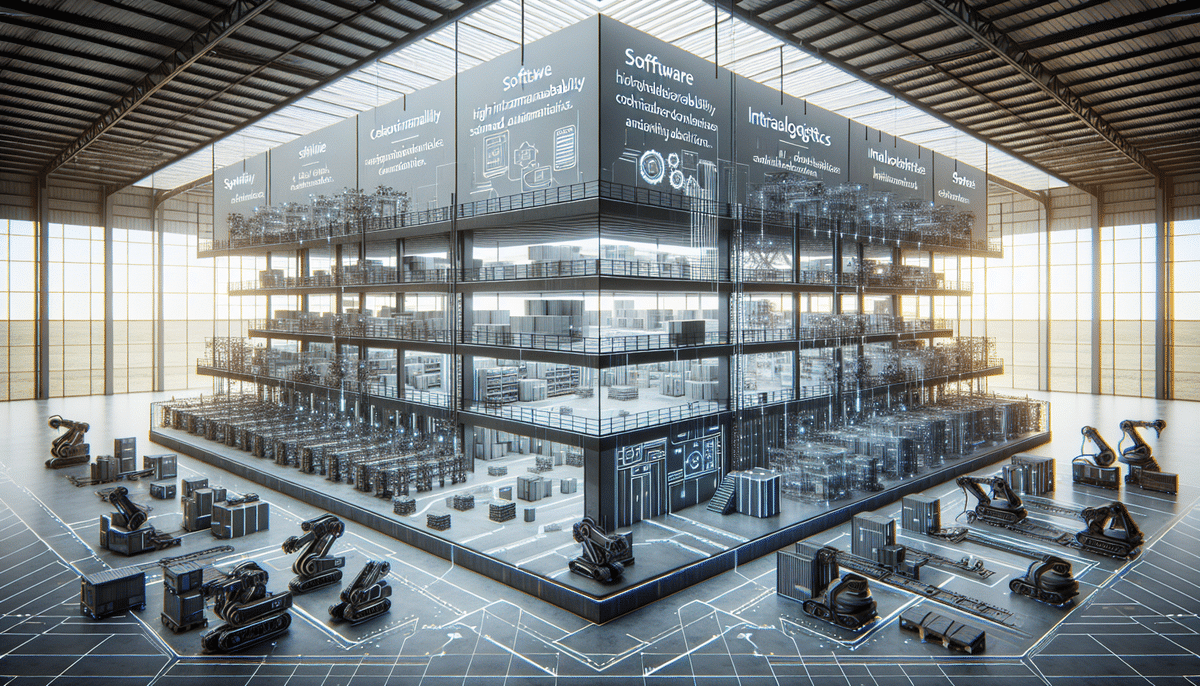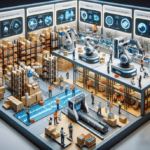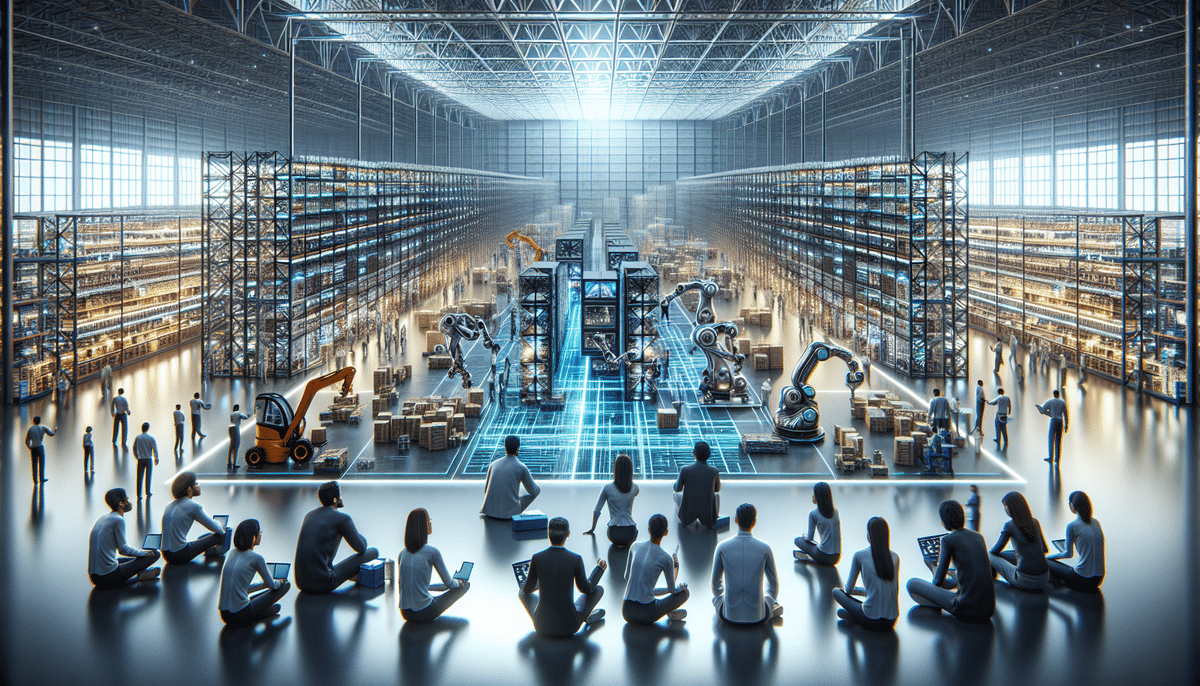Swisslog vs Kiva Systems (Amazon Robotics)
Warehouse automation and logistics have evolved significantly in recent years. Swisslog and Amazon Robotics are two of the leading names in the industry, offering state-of-the-art warehouse automation and logistics solutions. This article provides an in-depth comparison of these two prominent systems, examining their histories, technologies, features, benefits, and limitations.
Overview of Swisslog and Amazon Robotics
Swisslog is a Swiss-based provider of logistics automation solutions for warehouses and distribution centers across various industries, including e-commerce, healthcare, and food and beverage. In contrast, Amazon Robotics, formerly known as Kiva Systems, is a subsidiary of Amazon that offers robotic warehousing services. Both companies deliver highly innovative solutions that help businesses optimize productivity and efficiency.
Swisslog's offerings include automated storage and retrieval systems (ASRS), conveyor systems, and software that manages inventory and order fulfillment. They also provide consulting services to design and implement customized solutions tailored to specific business needs. On the other hand, Amazon Robotics specializes in deploying fleets of robots that move inventory within warehouses, reducing reliance on human labor and enhancing operational efficiency. These robots transport shelves of products directly to workers, who then pick and pack items for shipment. Together, Swisslog and Amazon Robotics lead the way in logistics automation, ensuring businesses remain competitive in an increasingly fast-paced market.
History and Evolution
Swisslog
Founded in 1900, Swisslog began as a transportation and logistics company before transforming into a global provider of logistics automation solutions. In the 2000s, Swisslog shifted its focus to automation, notably acquiring TGW Logistics Group in 2015, a leader in automated warehouse solutions.
Today, Swisslog operates in over 20 countries with a workforce exceeding 2,500 employees worldwide. Their solutions range from ASRS and conveyor systems to robotic solutions for healthcare facilities. Swisslog's innovative technologies have enabled companies across various sectors to optimize supply chain operations and enhance efficiency.
In recent years, Swisslog has prioritized sustainability, developing eco-friendly solutions such as automated guided vehicles (AGVs) powered by lithium-ion batteries. This commitment to reducing energy consumption and carbon emissions has earned Swisslog accolades, including recognition from the Green Supply Chain Awards.
Amazon Robotics
Kiva Systems was founded in 2003 with the goal of creating robotic systems capable of moving products within warehouses. In 2012, Amazon acquired Kiva Systems, rebranding it as Amazon Robotics to enhance its own warehouse and distribution operations.
Since the acquisition, Amazon Robotics has continuously innovated its robotic systems. In 2014, Amazon launched the Amazon Picking Challenge, a competition aimed at advancing robotic picking and packing capabilities to boost warehouse efficiency and productivity.
As of 2023, Amazon Robotics operates in over 25 fulfillment centers globally, deploying more than 200,000 robots alongside human employees. These robotic systems have markedly improved warehouse operations by reducing order fulfillment times and increasing accuracy and efficiency. Amazon Robotics continues to invest heavily in research and development, striving to create more advanced robotic systems capable of handling a broader range of tasks.
Comparative Analysis
Technology and Engineering Differences
The primary technological distinction between Swisslog and Amazon Robotics lies in their automation approaches. Swisslog relies on fixed conveyors and ASRS, requiring intricate planning and integration, whereas Amazon Robotics utilizes mobile robots for dynamic product movement.
Swisslog's systems are inherently more complex, necessitating detailed installation and ongoing maintenance. In contrast, Amazon Robotics’ robots are simpler to deploy and operate, offering a more streamlined implementation process.
In terms of software and data management, Swisslog offers highly customizable platforms tailored to specific warehouse configurations, though this requires substantial investment in software development. Amazon Robotics, however, utilizes a standardized software framework designed to accommodate a wide array of warehouse setups, providing a more cost-effective and quicker deployment option, albeit with less flexibility in certain scenarios.
Key Features
Swisslog
- Automated Storage and Retrieval Systems (ASRS): Efficiently manages inventory with high precision.
- Conveyor Systems: Seamlessly transports goods throughout the warehouse.
- Customization: Solutions tailored to specific operational needs.
- Sustainability: Eco-friendly systems reducing carbon footprint.
Amazon Robotics
- Mobile Robots: Autonomous robots that navigate warehouses to move products.
- Space Optimization: Reduces the need for traditional storage areas, maximizing warehouse space.
- Scalability: Easily scalable by adding more robots as demand grows.
- Integration: Works collaboratively with human employees for efficient operations.
Benefits
Swisslog
- Increased Productivity: Automated systems streamline operations, reducing manual labor and speeding up processes.
- Enhanced Accuracy: Automation minimizes human error, ensuring precise inventory management and order fulfillment.
- Safety Improvements: Reduces the need for manual handling of heavy or dangerous items, enhancing workplace safety.
- Customization: Tailored solutions meet specific operational requirements.
Amazon Robotics
- Increased Productivity: Robots significantly speed up picking and packing processes.
- Enhanced Accuracy: Automated systems ensure higher accuracy in order fulfillment.
- Reduced Labor Costs: Minimal human intervention lowers labor expenses.
- Flexibility and Scalability: Easy to adapt and scale operations based on demand.
Implementation Processes
Swisslog
Due to the complexity of their systems, Swisslog solutions require extensive planning and integration with existing infrastructure. Installation can be time-consuming, necessitating careful coordination to minimize disruptions. Swisslog offers comprehensive consulting services to ensure a smooth implementation process tailored to each client's unique needs.
Amazon Robotics
Amazon Robotics’ robots are relatively straightforward to deploy, enabling quicker implementation. The standardized nature of their systems allows for faster setup and integration, reducing downtime and accelerating the path to operational efficiency. Amazon provides robust support and training to ensure seamless integration with existing warehouse operations.
Cost Analysis
Cost is a crucial factor when selecting between Swisslog and Amazon Robotics’ warehouse automation solutions.
- Swisslog: Generally more expensive to install due to high customization and complexity. However, the investment can be justified by tailored efficiency gains and scalability.
- Amazon Robotics: Offers a more affordable solution with lower maintenance costs, making it attractive for businesses with tighter budgets or those seeking a cost-effective entry into automation.
Ultimately, the choice depends on the specific financial constraints and long-term operational goals of the business.
Case Studies
Swisslog
Swisslog's solutions have been pivotal in the e-commerce sector, where rapid and accurate order fulfillment is critical. For instance, Swisslog partnered with a leading e-commerce company to implement ASRS, resulting in a 30% increase in storage capacity and a 25% reduction in order processing times.
Amazon Robotics
Amazon has leveraged Amazon Robotics’ robots to become one of the world's largest online retailers. The implementation of Amazon Robotics has enabled Amazon to process orders more swiftly and accurately, significantly enhancing customer satisfaction and operational efficiency. According to a 2023 Business Insider report, Amazon's use of robotics has reduced fulfillment times by up to 50% in some facilities.
Limitations
While both Swisslog and Amazon Robotics offer advanced automation solutions, they have limitations depending on the industry or operational requirements.
- Swisslog: May not be ideal for businesses requiring highly customized and large-scale systems due to the time and complexity involved in implementation and maintenance.
- Amazon Robotics: Mobile robots may not be suitable for handling very heavy or fragile products that necessitate specialized movement and handling techniques.
Businesses must assess these limitations in the context of their specific needs to ensure the chosen system aligns with their operational demands.
Future Prospects
The future of warehouse automation looks promising for both Swisslog and Amazon Robotics. As demand for automated solutions continues to rise, these companies are well-positioned to deliver innovative and practical technologies.
Both companies are focusing on adapting their technologies to meet evolving consumer and business needs. This includes expanding into new markets, integrating predictive analytics, and enhancing their product lines to offer more versatile and intelligent automation solutions. Additionally, advancements in artificial intelligence and machine learning are expected to further enhance the capabilities of warehouse automation systems, providing even greater efficiency and adaptability.
Conclusion
Choosing between Swisslog and Amazon Robotics for warehouse automation depends on several factors, including industry type, product handling requirements, warehouse size, budget, and specific operational needs.
- Swisslog: Offers flexible and customizable solutions suitable for businesses that require tailored automation systems and are willing to invest in the initial setup and maintenance.
- Amazon Robotics: Provides a more straightforward and cost-effective solution ideal for businesses aiming to enhance productivity with minimal upfront investment.
Ultimately, businesses should carefully weigh the pros and cons of each system in relation to their unique requirements to determine the best fit for their warehouse automation needs.






















